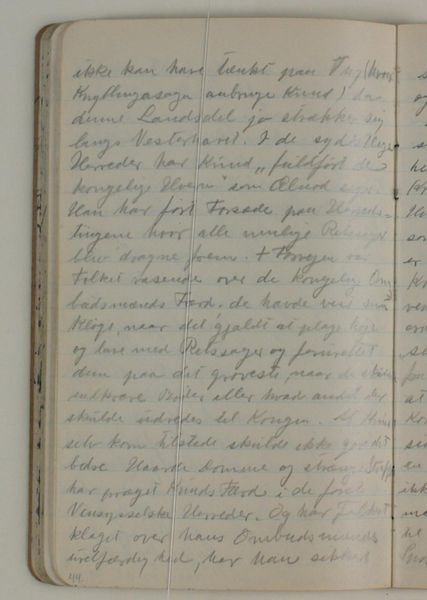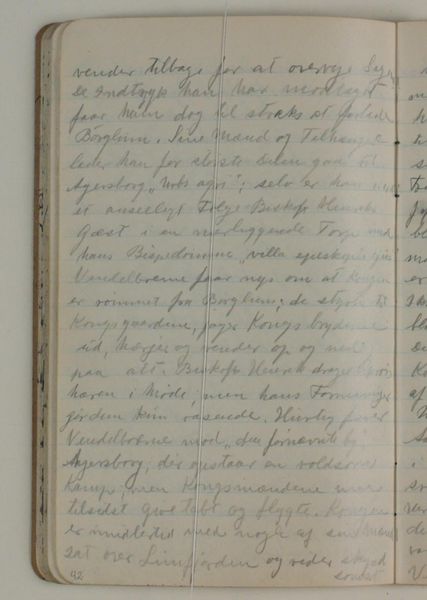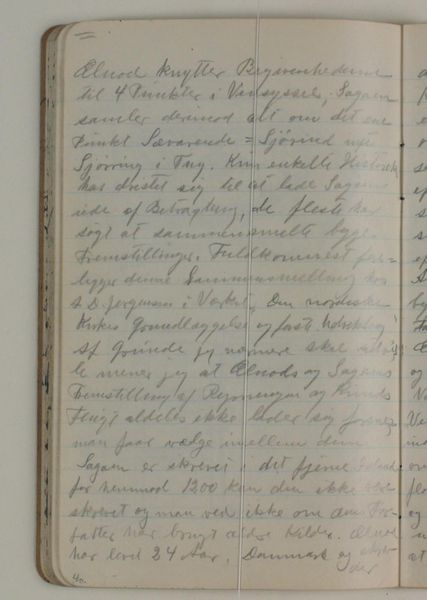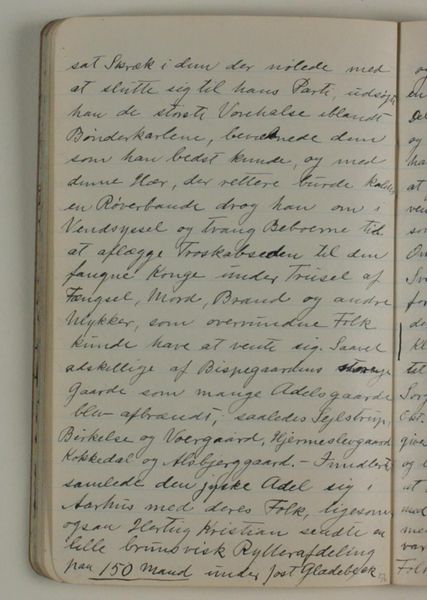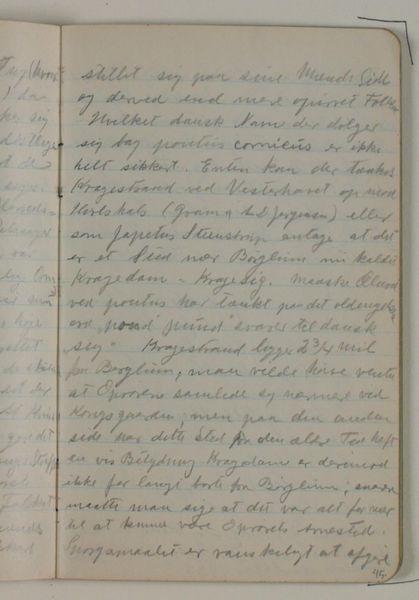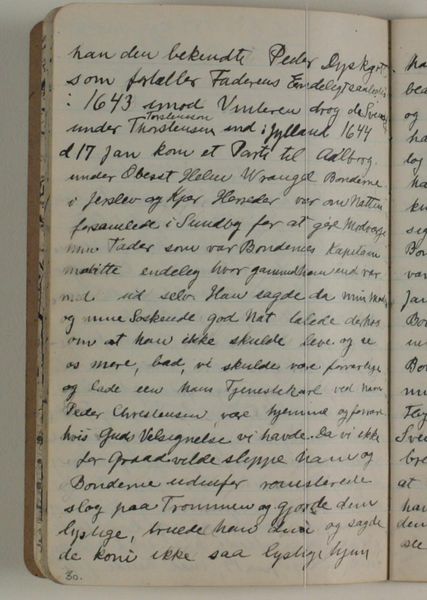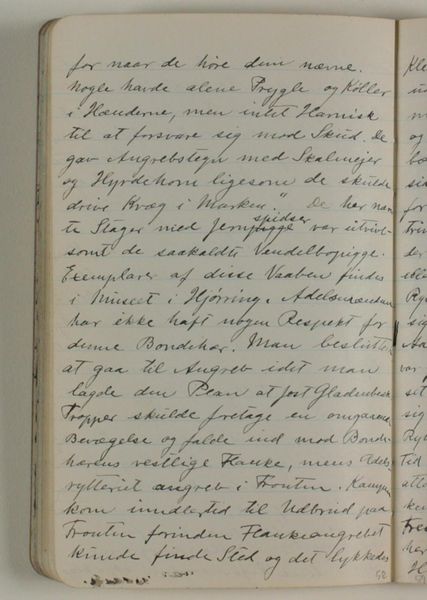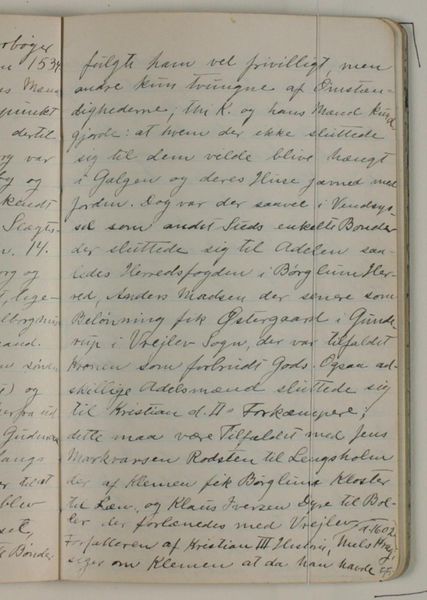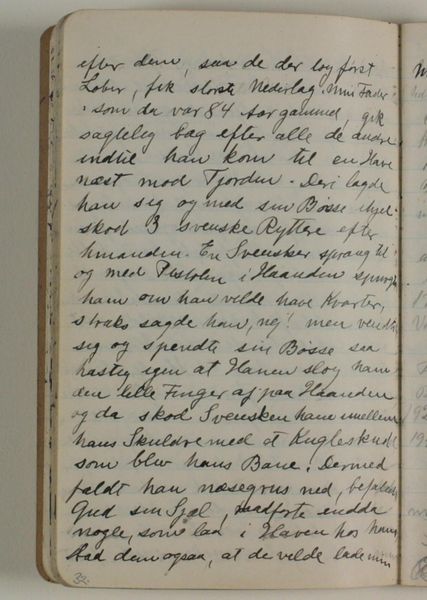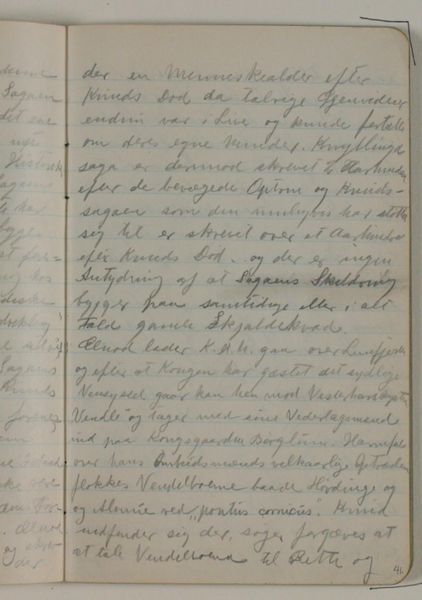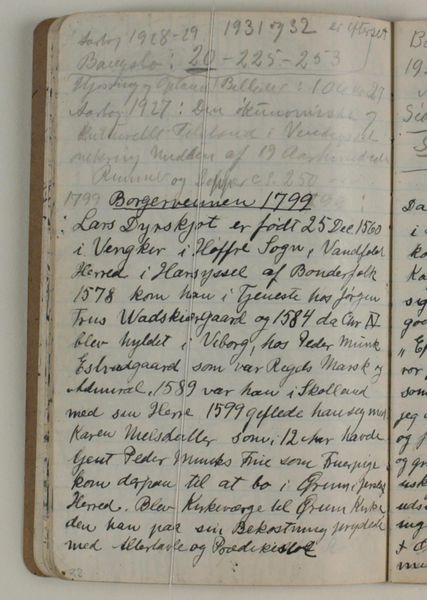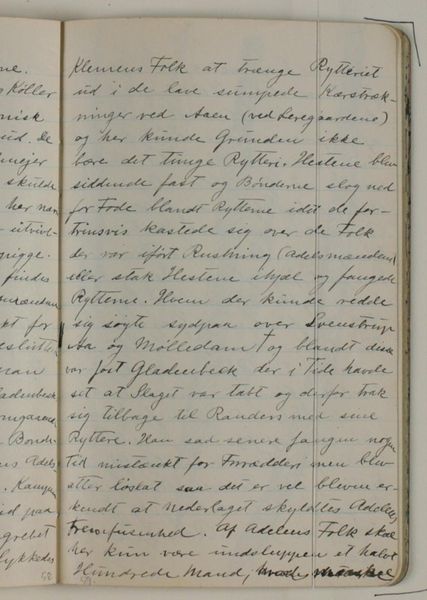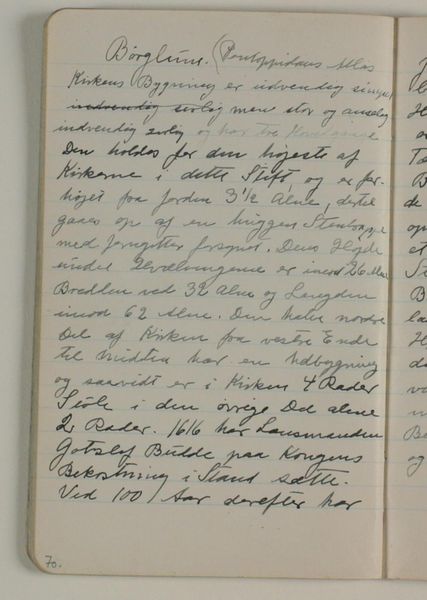
Notater vedrørende Ælnods saga om Knud den helliges færd i Vendsyssel. afskrift efter artikel i Historisk Tidsskrift af Hans Olrik. 1933 - 1934
0:00
0:00
drawing, paper, ink
#
drawing
#
narrative-art
#
paper
#
ink
#
watercolor
Dimensions: 175 mm (height) x 109 mm (width) (monteringsmaal), 175 mm (height) x 109 mm (width) (bladmaal)
Curator: Here we have Niels Larsen Stevns' "Notater vedrørende Ælnods saga om Knud den helliges færd i Vendsyssel. afskrift efter artikel i Historisk Tidsskrift af Hans Olrik," created between 1933 and 1934. It's a drawing made with ink on paper. Editor: My first impression is that this is remarkably intimate, like glimpsing someone's private thoughts. The close handwriting gives it such a personal feel, a little secretive almost. Curator: Indeed. Stevns engages here with the narrative surrounding Saint Canute's journey in Vendsyssel, Denmark. We see him grappling with historical texts, specifically Hans Olrik's article, evidenced by the "afskrift" in the title, revealing his intellectual and creative process. His project delves into Danish history, myth, and the complex relationship between faith and power, connecting us to deeper socio-political considerations within that period. Editor: From a formal perspective, the lines of script create an almost abstract pattern across the page, interrupted only by the page numbers at the bottom corners. The texture of the paper seems soft, which contrasts the rigid lines of ink quite remarkably. It makes me think about how we attribute value to written language, and whether that translates from a book to this loose form. Curator: Precisely. These are not mere transcriptions, but acts of interpretation. Each copied word reflects Stevns’ own framing. How can one divorce an apparent "copy" from Stevns' intentions? He interrogates the construction of national identity through religious narratives. Editor: I'm intrigued by the potential layering here. How does his engagement with this historical text mirror, perhaps subvert, our expectations of historical "truth?" Is it his intention to copy or his engagement with an act of copying? Curator: Excellent question. Considering the political climate of the 1930s, marked by rising nationalism across Europe, Stevns' artistic actions can be read as acts of both preservation and critique. This piece embodies the struggle between cultural heritage and the ever-present threat of its misuse, opening fascinating areas for exploration and study. Editor: The seeming inconsequential, evenness of it—a casual record—belies the conceptual underpinning and allows it to become so powerful. Curator: It reveals just how personal and political art can be, even through something that initially appears as an almost objective copy. Editor: Leaving us with an intense perspective.
Comments
No comments
Be the first to comment and join the conversation on the ultimate creative platform.
